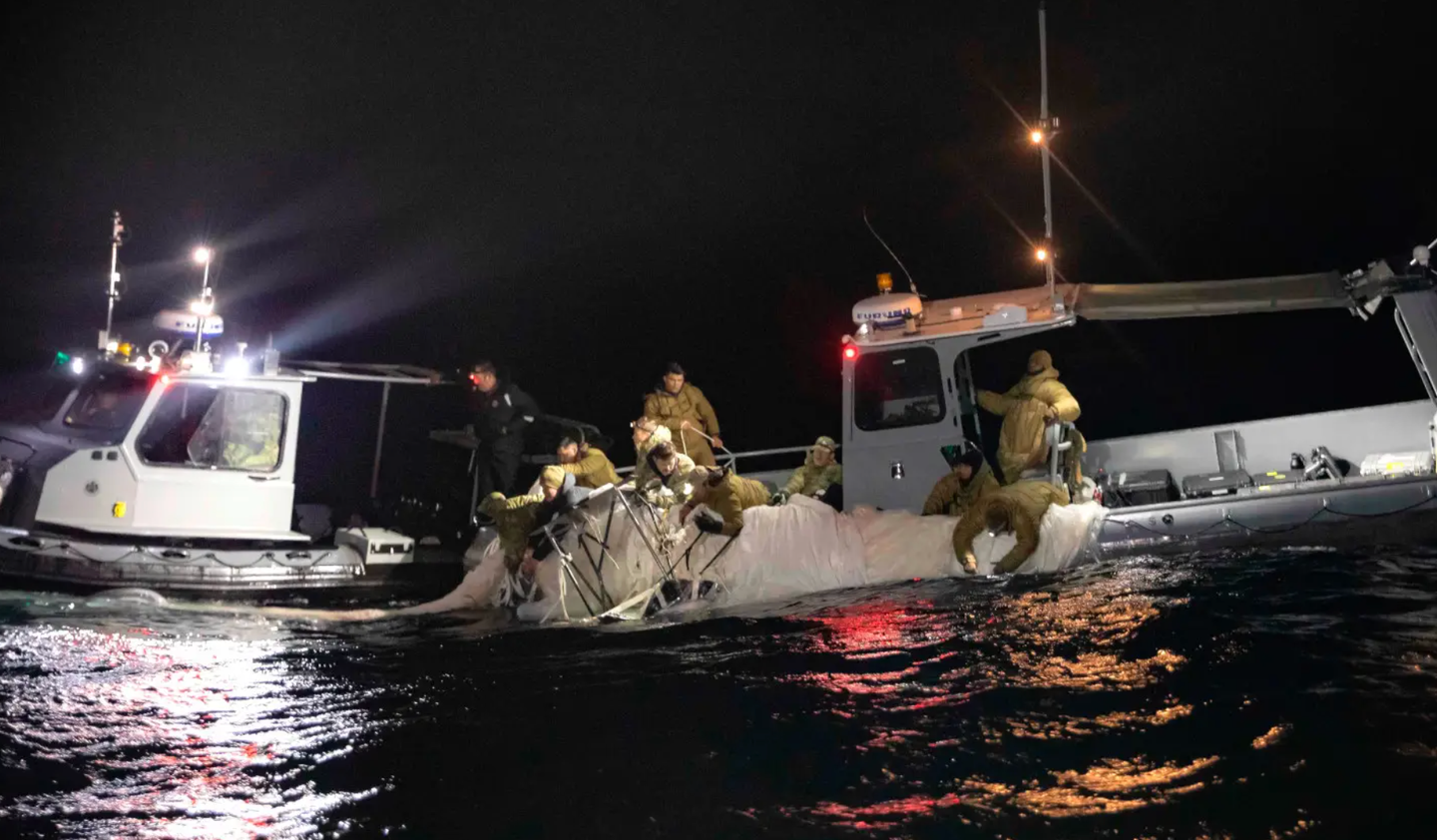The US is working toward a solution in which high-flying surveillance balloons entering American airspace could be intercepted while in flight and safely retrieved on the ground, enabling a thorough analysis of their payload and capabilities.
The US Defense Advanced Research Projects Agency (DARPA) has recently launched the CAPTURE (Capturing Aerial Payloads to Unleash Reliable Exploitation) program, intending to develop methods to capture high-flying UAVs and their payload rather than shooting them down with expensive missiles.
DARPA, the agency responsible for spearheading emerging technologies for the US military, seeks to develop a strategy for capturing stratospheric balloons, presenting a more economically viable and cautious alternative than using air-to-air missiles.
The initiative’s primary objectives encompass minimizing collateral damage, improving payload retrieval, and decreasing response expenditures. This endeavor prompted a request for solutions from defense companies through DARPA’s Small Business Innovation Research (SBIR) initiative.
The envisioned resolution for the CAPTURE program should facilitate the interception of balloons “under positive control in a manner safe to the surrounding area while maximizing exploitation of the captured system.”

DARPA explained that the recent breaches of US airspace have exposed the limitations of effectively recovering sensitive payloads from slow-moving, high-altitude objects “in a manner that is both effective for follow-on exploitation and scalable to employment over diverse geographic areas.”
The agency elucidated this predicament in a project statement, underscoring that only a handful of aircraft in the United States Air Force’s fleet, like the F-22 Raptor, can operate at elevated altitudes.
These aircraft navigate at speeds of hundreds of miles per hour as they endeavor to detect and engage with objects that are either moving slowly or stationary, said DARPA.
While the potential benefits of such an approach include a substantial intelligence advantage and the likely deterrence of China or other countries from deploying high-altitude surveillance over North America, the practical implementation of this concept is poised to present considerable hurdles.
Notably, the intended target balloon could operate at altitudes exceeding 70,000 feet, verging on the edge of space and twice the elevation of a typical commercial airliner.
The most comparable precedent to the CAPTURE program is the Cold War era Fulton “Skyhook” system, which involved deploying sizable military aircraft like the C-130 to snag lines attached to emergency rescue balloons launched from the ground to aid downed pilots.

These balloons were affixed to harnesses that enabled stranded personnel to be retrieved from the ground by aircraft in flight. It’s worth noting that this method significantly differs from the operation of CAPTURE and is notably less reliant on high-altitude technologies.
Nevertheless, safely returning harnessed pilots to the ground could offer some insights and technological cues for participants in the CAPTURE project to draw upon.
The Chinese Spy Balloon Incident
The necessity for such capabilities was emphasized in February 2023 when a Chinese stratospheric balloon was identified traversing sensitive US military installations, including strategically crucial ballistic missile launch bases.
The balloon was subsequently intercepted and destroyed by an F-22A Raptor utilizing an AIM-9X Sidewinder missile.
According to a report by the EurAsian Times on debris analysis, it was revealed that the Chinese balloon had incorporated commercially accessible US technology alongside sophisticated Chinese sensors and other specialized equipment.
This configuration was primarily intended for collecting images, videos, and other forms of data, with the ultimate purpose of transmitting this information to China.
However, US officials affirmed that it had intelligence collection capabilities, although the Pentagon clarified that the balloon did not transmit any information back to China.

In late June 2023, General Pat Ryder, a spokesperson for the Pentagon, stated, “We believe that it did not collect while it was transiting the United States or flying over the United States, and certainly the efforts that we made contributed.”
Nonetheless, General Glen VanHerck, the head of the North American Aerospace Defense Command (NORAD), acknowledged on July 20, 2023, that the incident involving the Chinese spy balloon has raised serious questions regarding the United States’ capacity to detect airborne threats.
Hence, DARPA’s initiation of the CAPTURE project holds substantial importance for enhancing the US military’s ability to address such scenarios in the future.
Currently, Project CAPTURE is in its preliminary phase of collecting proposals, aiming to incorporate existing technologies and systems to expedite the development timeline.
Submissions of proposals are required by September 21, at which juncture DARPA will commence the assessment process and allocate contracts.
Following this phase, participants of the CAPTURE project will have a six-month timeframe to submit their final design for a thorough evaluation. After that, they will be granted six more months to advance the design into a functional prototype.
- Contact the author at ashishmichel(at)gmail.com
- Follow EurAsian Times on Google News




